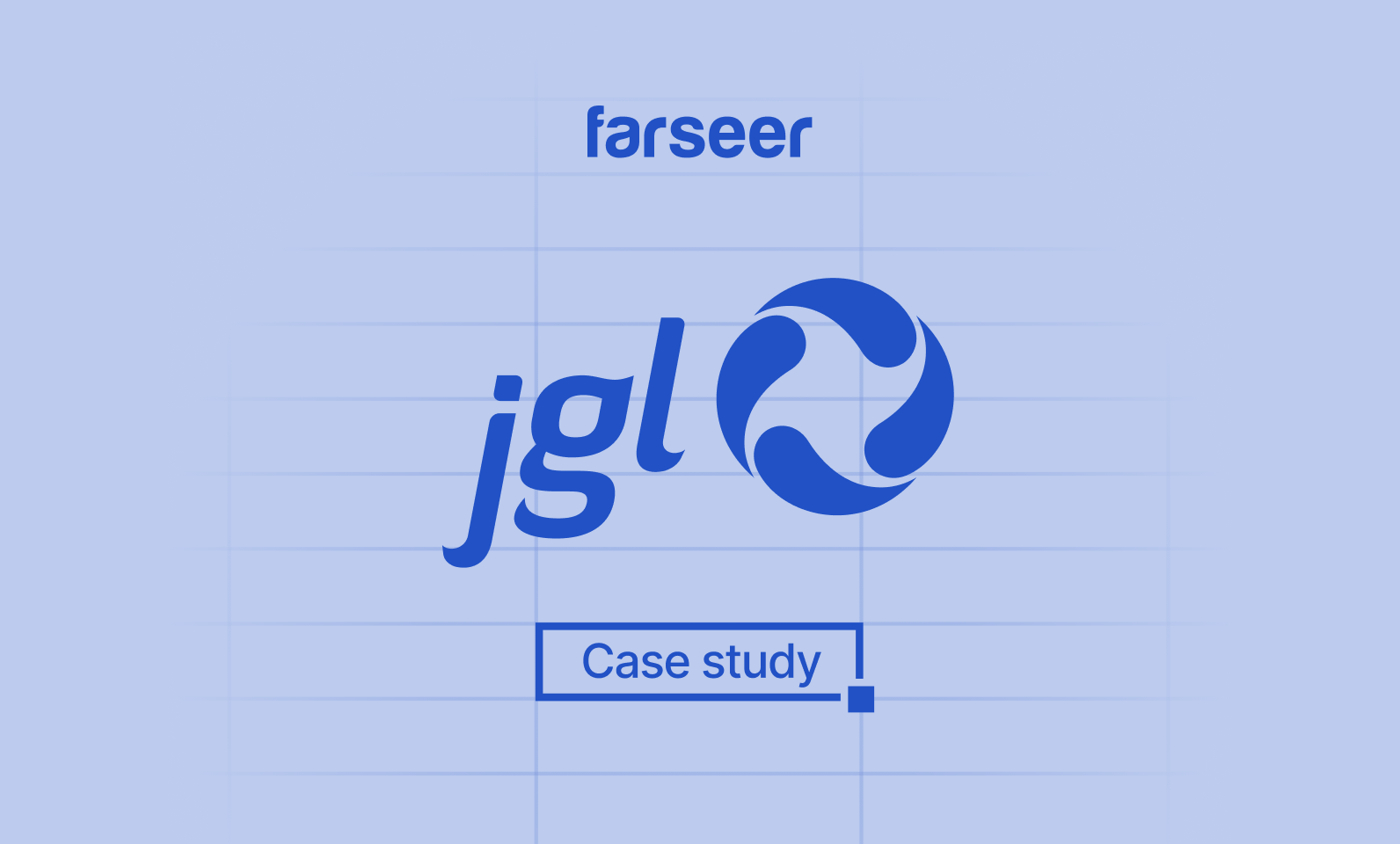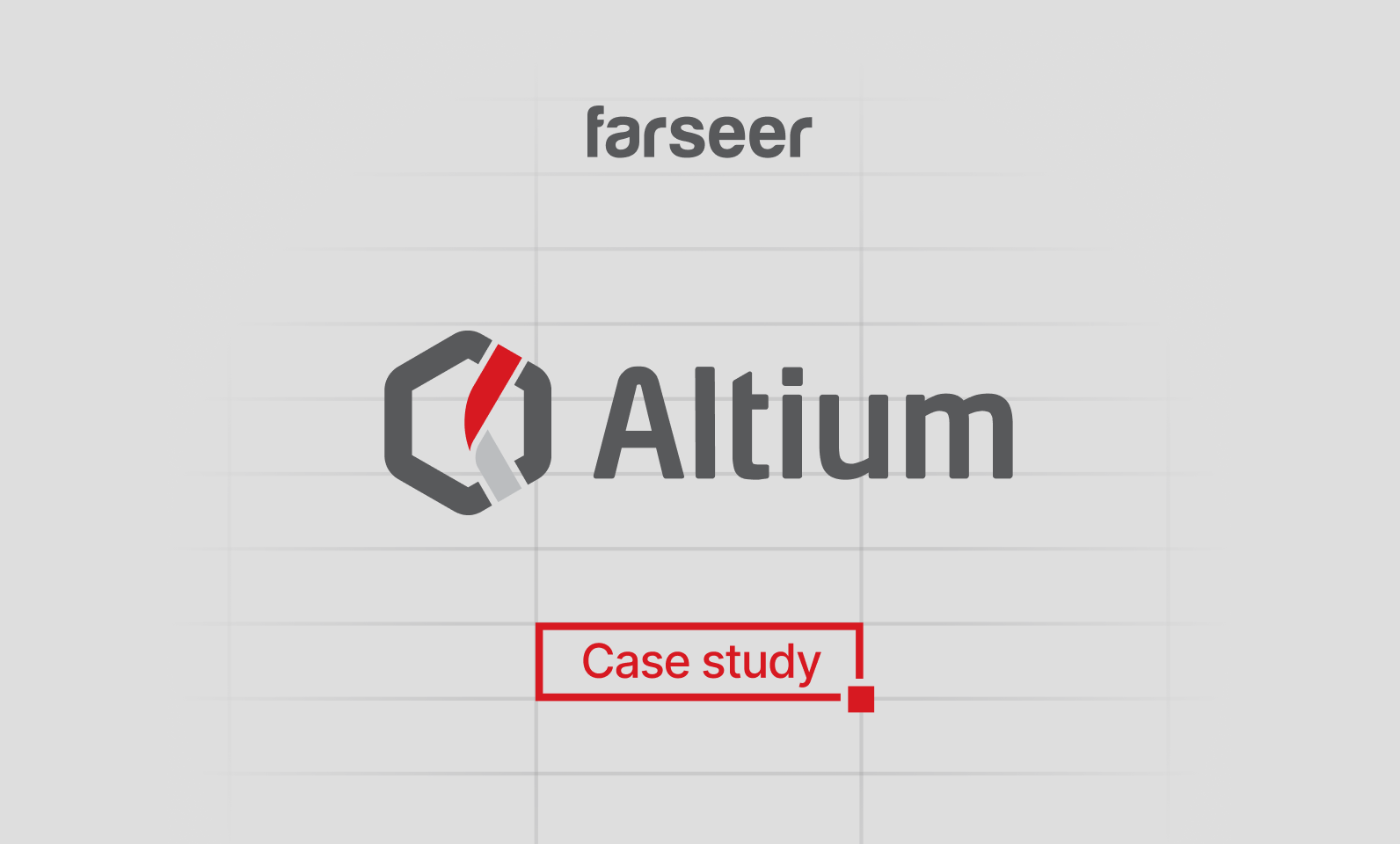CIOS eliminates spreadsheet chaos across 15 entities with Farseer
About the Client
CIOS Group is the leading waste management company in Croatia, with around 15 legal entities operating under one roof. But when it came to financial consolidation, things were anything but streamlined. The process was manual, messy, and error-prone, held together by spreadsheets, patience, and a whole lot of double-checking.

Every reporting cycle felt like déjà vu. Dozens of Excel files. Hundreds of sheets. Thousands of opportunities for human error.
“Just collecting the data took two weeks. Then we had to process everything manually. One wrong formula, and it was back to square one.” – Nataša Višnić, Financial reporting and consolidation, C.I.O.S. Group
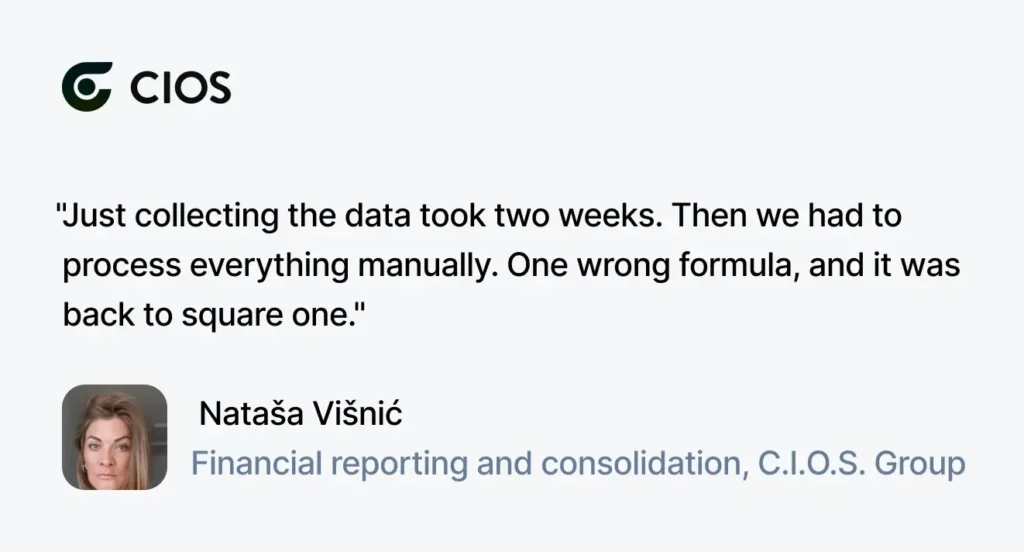
Too many sheets, too little time

Even before Farseer, CIOS had a reputation for delivering top-tier reporting. Every consolidation cycle, no matter how painful, was closed on time, with precision and care. The numbers were always right. But getting there? That took serious effort.
Each of the 15 entities submitted massive Excel packages, often 30 to 40 sheets deep. The finance team reviewed every file manually – unlocking, adjusting, protecting, cross-checking formulas – and then merged everything into one central master sheet. It worked, but only because the team went above and beyond to keep it running.
“I would send out Excel packages every year. I had to unlock every sheet, adjust them for the new year, then protect them again, just to prevent someone from accidentally breaking a formula.” – Nataša Višnić, Financial reporting and consolidation, C.I.O.S. Group
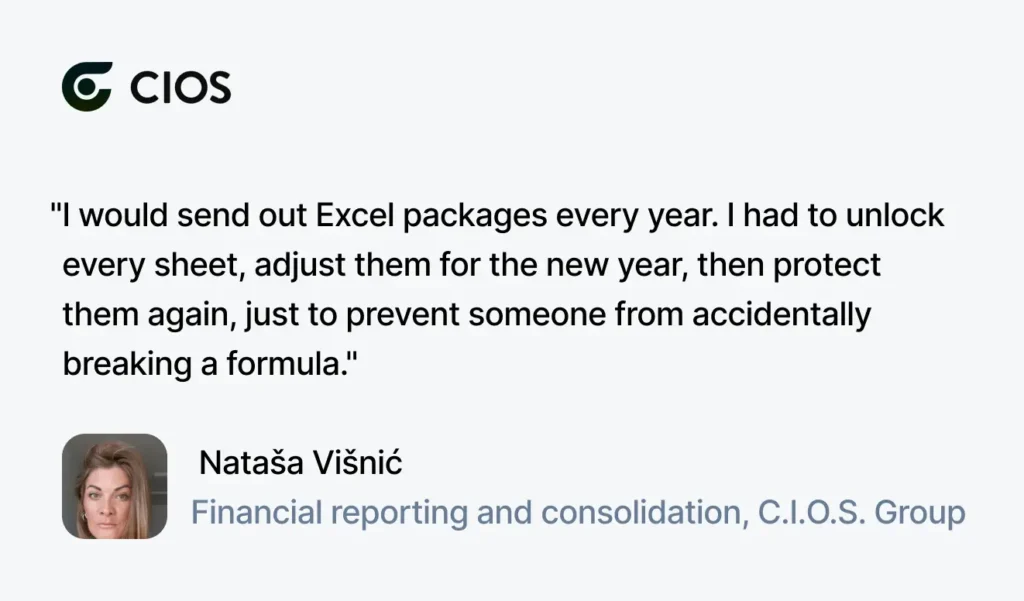
Behind the scenes, it was a version-control obstacle course. Files arrived late. Some were missing pieces. Others broke mid-way through. Tracking down mistakes became a job in itself.
“If someone moved a formula one cell to the left or right… it could take hours to figure out what happened.” – Nataša Višnić, Financial reporting and consolidation, C.I.O.S. Group
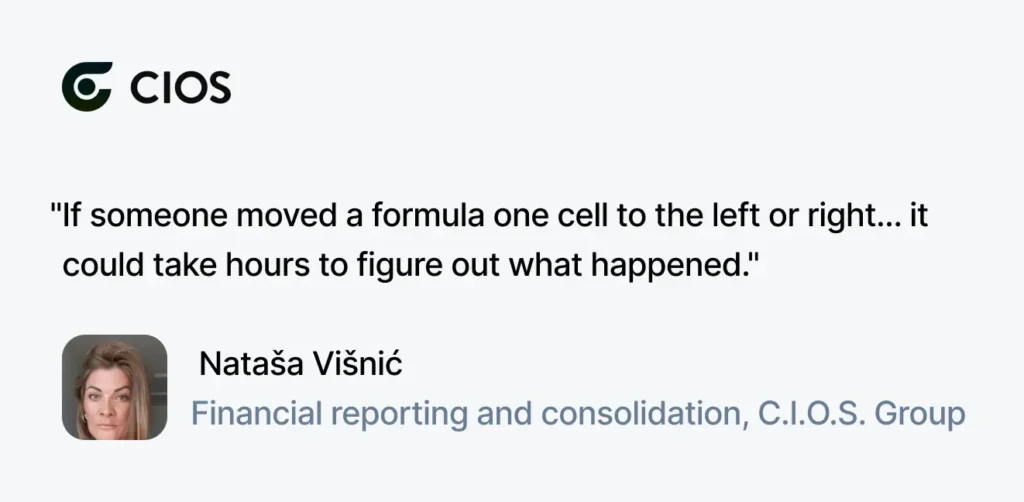
And this wasn’t just about meeting statutory obligations. Leadership wanted more frequent insights – consolidated snapshots mid-year, quarterly reports, real-time views of group performance. The finance team was not able to deliver without Excel as the foundation, that took weeks to prepare, just for simple financial overview.
They never missed a deadline. But it came at a cost: time, energy, and too many late nights buried in spreadsheets.
Searching for the right solution and finding nothing
CIOS had outgrown Excel long ago. Like many enterprise groups, they found themselves stuck between two extremes: tools too basic to manage their complexity, and others so overengineered they required an army of consultants just to get started.
They didn’t need legacy enterprise software built for compliance teams and consultant armies. They needed a modern enterprise solution – powerful enough to handle complexity, but fast, flexible, and built for execution, not ceremony.
Farseer fit that gap perfectly. A platform that can support 150 entities – but doesn’t require 150 workshops to get started.
The finance team explored the market. What they found was a parade of platforms that promised everything, but delivered too much. Too complex. Too expensive. Too slow to implement.
“Most of the tools we looked at were overkill. Too complex, too expensive, and too rigid for a group like ours.” –Nataša Višnić, Financial reporting and consolidation, C.I.O.S. Group
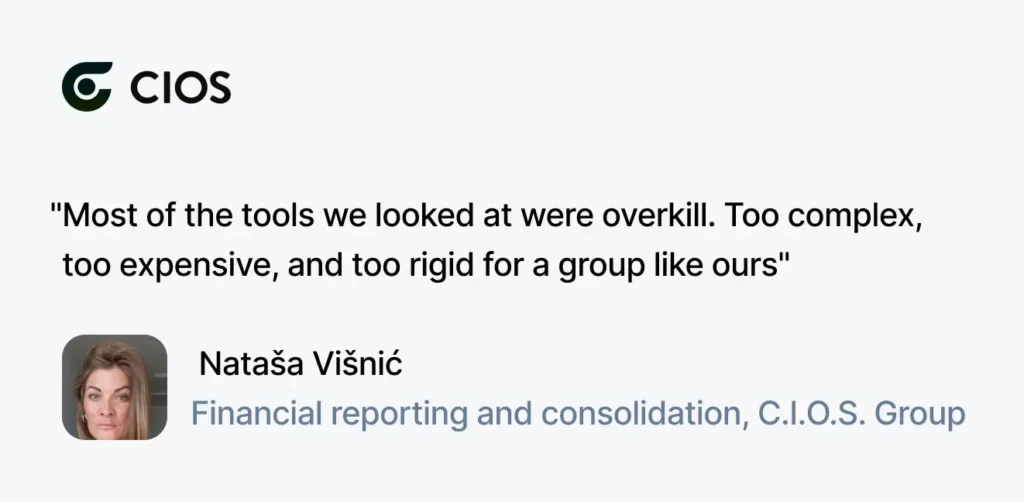
CIOS didn’t need bells and whistles for the sake of it. Their consolidation needs were complex, but clear – and they weren’t interested in spending a year configuring a legacy system just to move past Excel.
They wanted real capability without the overhead. A system powerful enough to handle 15 entities, but fast enough to deliver value in quarter one – not year two.
“We needed something purpose-built for companies like ours, not a stripped-down version of a tool made for someone else.” – Nataša Višnić, Financial reporting and consolidation, C.I.O.S. Group
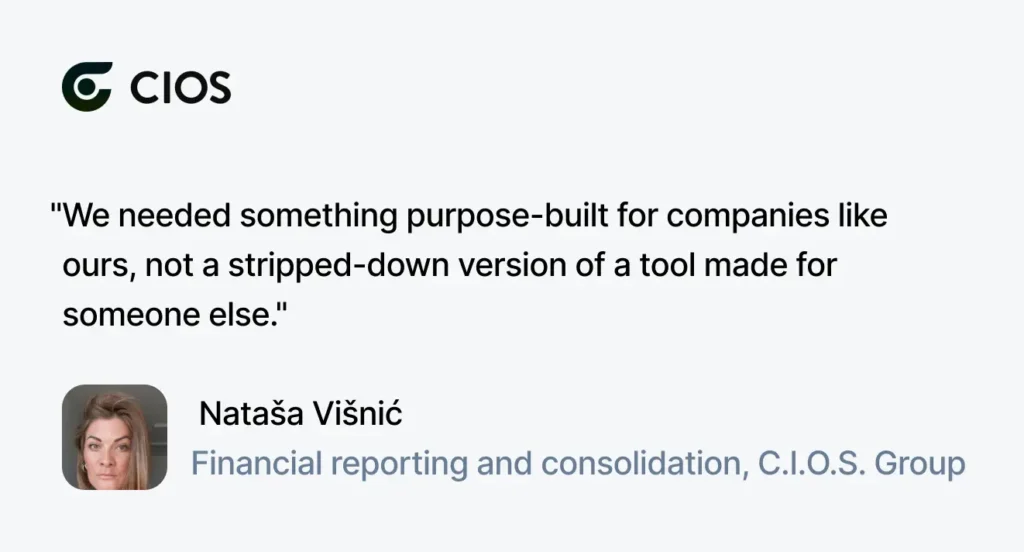
Farseer doesn’t sit in the middle – it replaces both. No more Excel chaos. No more enterprise bloat. Just a platform that works the way finance teams actually do.
It was the first solution that spoke their language: flexible, fast to implement, and purpose-built for the kind of operational complexity CIOS deals with. Not a shiny platform made to impress investors. Just something that works – without the overhead.
And that’s when things started to shift.
Rebuilding the process from the ground up

CIOS didn’t need more tools. They needed structure, automation, and speed – without losing control. The implementation started by connecting their ERP system and mapping the exact data flow for each entity.
Today, the majority of group data flows directly into Farseer – structured, reliable, and ready for consolidation the moment it lands. What used to be a bottleneck is now a seamless, ongoing process.
As Nataša says: “The majority of our group is now automated. I only have to wait on a few companies, and even that’s fast. I can work on everything else in the meantime.”

With clean data flowing in, everything changed. Consolidation is no longer a scramble – it’s a system.
What used to take weeks now takes days.
What used to feel like firefighting now feels calm and controlled.
And what used to be exhausting is now just… work.
“If I have all the inputs, I can finish consolidation in a day or two. Before, it was a two-week ordeal just to get started.” – Nataša Višnić
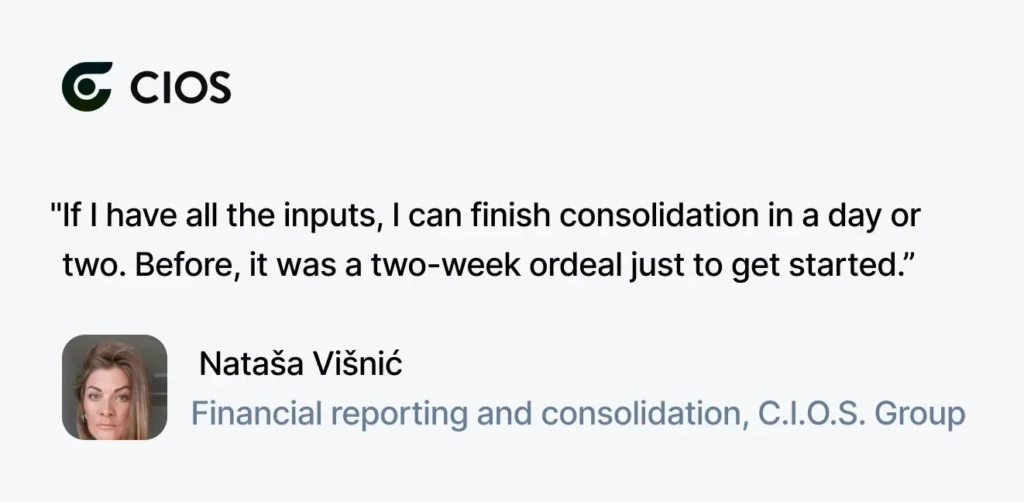
50% less time. 80% less manual work.
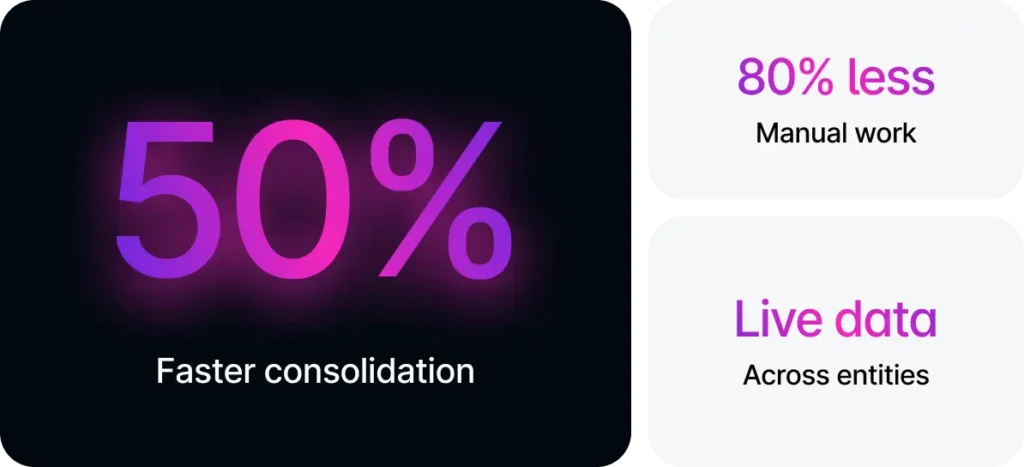
The difference is visible across the board. The consolidation cycle has been cut in half. What once took weeks now takes a matter of days. Manual steps have dropped by 80%, freeing up time and reducing risk.
“I got my time back. And my eyes. I’m not scrolling through 600 Excel sheets anymore.” – Nataša Višnić
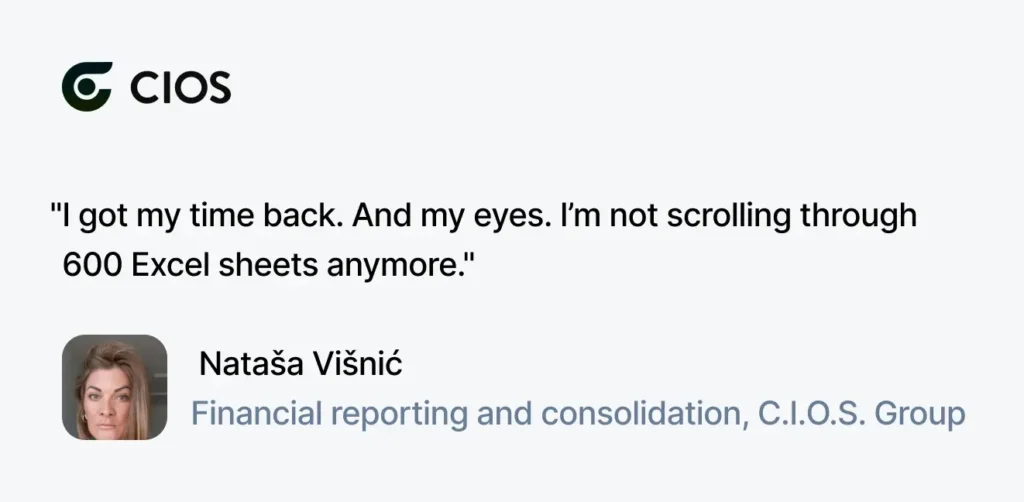
There’s no more hunting for broken formulas or digging through file versions to find the truth. The process is lean, traceable, and fast — and finance can now focus on delivering insights instead of cleaning up inputs.
“Manual work is cut by more than 50%. And I know exactly where every number came from.” – Nataša Višnić

And perhaps most importantly: leadership gets the data they need, when they need it — not weeks later, not buried in PDFs, but live, structured, and ready to act on.
Today, CIOS no longer dreads consolidation. The process is faster, cleaner, and more resilient.
And the energy once spent chasing down errors? Now it’s powering real progress — where it matters most.

